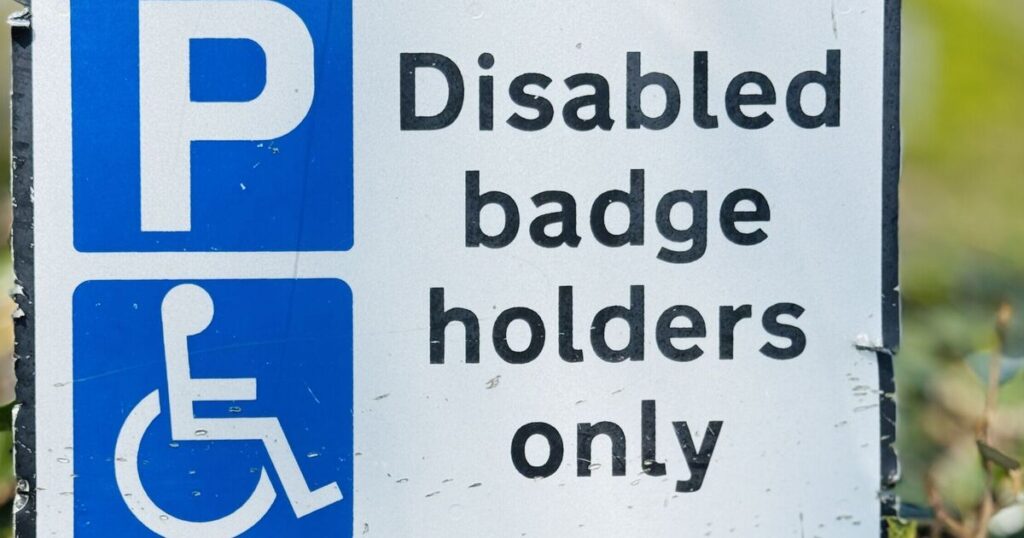
For those with disabilities that impact mobility, travelling can be a challenge. However, the Blue Badge scheme can significantly alleviate this issue.
The Blue Badge is designed to aid individuals with disabilities or health conditions by allowing them to park closer to their destination. The badge allows the holder, or anyone driving them as long as they are in the vehicle, to use disabled parking bays and even park on double yellow lines.
The advantages of a Blue Badge go beyond easy access – it can also offer financial benefits as holders often enjoy free parking in disabled bays or car parks. Moreover, the badge is not tied to a specific vehicle and can be used in any car the holder is travelling in, including taxis.
In England, a Blue Badge costs up to £10, while in Scotland it’s priced at £20. In Wales, it’s issued free of charge. Local authorities handle the processing of these badges, determining eligibility and setting the price.
Typically, a Blue Badge remains valid for up to three years, after which the holder must reapply. There are two categories of people who can obtain a Blue Badge – some qualify automatically, while others are assessed on an individual basis.
Who can get a Blue Badge?
Automatic qualification
In some cases, a person could be automatically eligible for a Blue Badge, thus allowing them to receive it without the need for an extensive assessment. This can include people who meet one of the following:
- you are registered blind (severely sight impaired)
- you receive the mobility component of Personal Independence Payment (PIP) and have obtained 10 points specifically for descriptor E under the ‘planning and following journeys’ activity, on the grounds that you are unable to undertake any journey because it would cause you overwhelming psychological distress
- you have received a lump sum benefit within tariff levels 1 to 8 of the Armed Forces and Reserve Forces (Compensation) Scheme and have been certified as having a permanent and substantial disability that causes inability to walk or very considerable difficulty in walking
- you receive PIP because you can’t walk more than 50 metres (a score of 8 points or more under the ‘moving around’ activity of the mobility component)
- you receive the higher rate of the mobility component of the Disability Living Allowance (DLA)
- you receive a War Pensioners’ Mobility Supplement
If you score anything other than 10 points under descriptor E, in the ‘planning and following journeys’ activity of PIP, you might still be eligible for a Blue Badge. However, automatic qualification does not apply, even if your score is higher at 12 points.
You’ll need to provide evidence to prove your eligibility, which will be evaluated during your application process.
Qualifying after an assessment
You could still receive a Blue Badge once you undergo an assessment if one or more of the following apply:
- you find walking very difficult due to pain, breathlessness or the time it takes
- you cannot walk at all
- you struggle severely to plan or follow a journey
- you have a severe disability in both arms and drive regularly, but cannot operate pay-and-display parking machines
- walking is dangerous to your health and safety
- you have a child under the age of 3 with a medical condition that means the child always needs to be accompanied by bulky medical equipment
- you frequently become extremely anxious or fearful of public/open spaces
- you find it difficult or impossible to control your actions and lack awareness of the impact you could have on others
- you have a child under the age of 3 with a medical condition that means the child must always be kept near a vehicle in case they need emergency medical treatment
- you are constantly a significant risk to yourself or others near vehicles, in traffic or car parks
- you have a life limiting illness, which means you cannot walk or find walking very difficult and have a SR1 form
- you regularly have intense and overwhelming responses to situations causing temporary loss of behavioural control
- you cannot walk without help from someone else or using mobility aids
How to apply
In England, Scotland and Wales, you can apply for a Blue Badge on GOV.UK. I f you’re in Northern Ireland, there’s a different application process. Visit here for more information.
Your local council will determine your eligibility for a badge. They cannot begin the assessment until they have all the necessary evidence.
The assessment of your application may take 12 weeks or longer. If they decide that you are not eligible and you believe they did not consider all the facts, you can request them to reconsider your application.
 Latest World Breaking News Online News Portal
Latest World Breaking News Online News Portal






